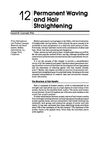Hair: The Most Sophisticated Biological Composite Material
January 2007
in “
Chemical Society Reviews
”
TLDR Hair is a complex protein fiber with unique properties useful for developing hair products.
The document reviewed the complex structure of hair, highlighting its composition as a proteinaceous fiber with a hierarchical organization from α-keratin chains to intermediate filaments. It discussed the unique physical properties of hair, such as the hydrophilic/hydrophobic paradox, and aimed to provide insights for protein and polymer chemists, as well as biochemists interested in the cytoskeleton and intermediate filaments. Additionally, it offered a scientific foundation for the development of hair cosmetics.
